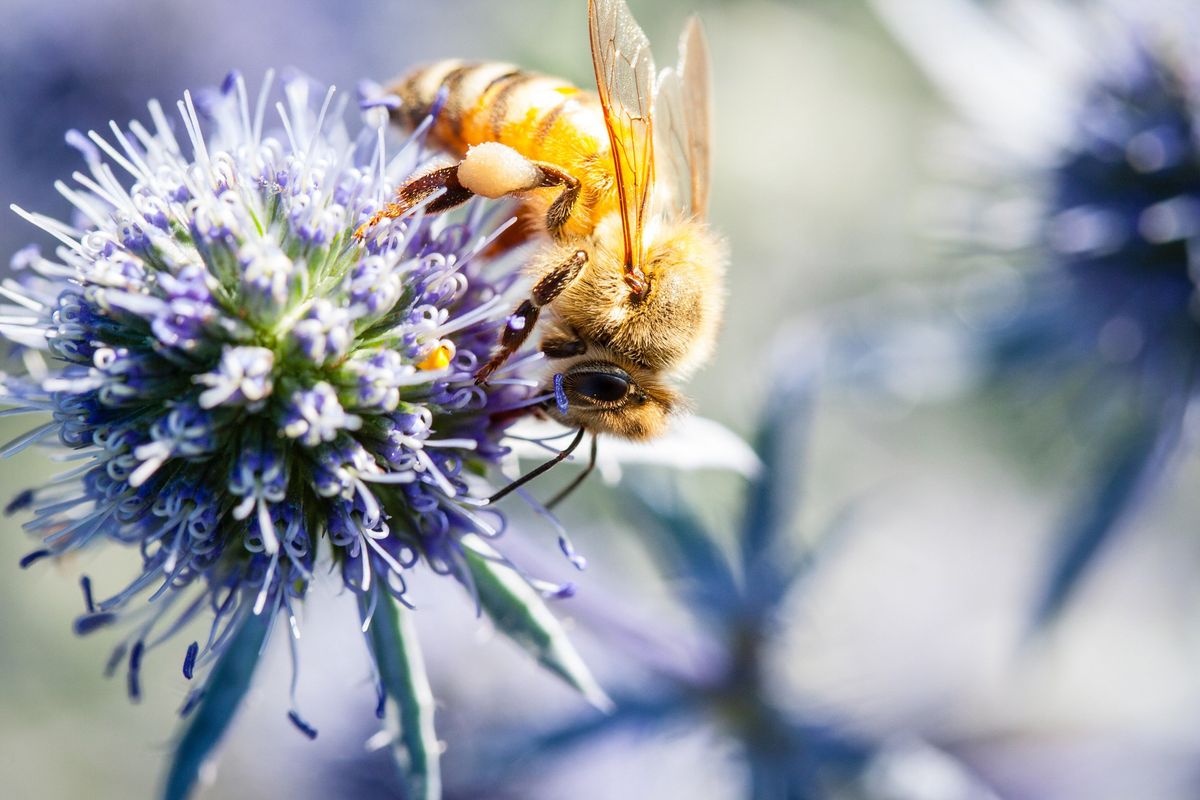If you ask a certain team of British computer scientists, “the wisdom of the hive” is more than just a poetic turn of phrase. These researchers have in fact studied the brains of honeybees to develop a new kind of machine intelligence for decision-making.
While a bee’s life looks simple on the surface—flitting through the air, sampling nectar and pollinating plants wherever they land—the decision-making process behind those seemingly random actions is more complex than meets the eye. Inside the apian neural network, a basic mode of operation appears to identify ideal flower targets in a matter of seconds with a high level of accuracy, at which point the bee buzzes over to its new feast. And all of this takes place inside a brain that is only the size of a sesame seed, with fewer than 1 million neurons.
“Surprisingly, bees’ decisions are not only highly adaptive and accurate but also faster when it comes to [making] choices.”
—HaDi MaBouDi, Opteran Technologies
HaDi MaBouDi is a senior researcher at Opteran Technologies—a brain-biomimicry startup spun off by the University of Sheffield— and a coauthor of the new study. MaBouDi says that he and colleagues were drawn to studying the process behind bees’ decision-making because of the lessons that artificial systems might learn.
“Computational decision-making often falls short in terms of adaptability, speed, accuracy, and risk aversion, especially when resources are limited—qualities that bees possess,” he says. “By integrating principles derived from biological models, AI systems have the potential to enhance their efficiency, robustness, and risk aversion.”
To better understand what’s really turning the cogs in bees’ brains, the research team first observed the behavior of 20 bees as they explored color-coded flowers in an artificial garden. The flowers contained a mix of sugar syrup, bitter-tasting tonic water, and distilled water. After observing the bees’ choices in a number of trials, MaBouDi and colleagues saw that bees were making decisions in a way that contradicts common sense.
“Surprisingly, bees’ decisions are not only highly adaptive and accurate but also faster when it comes to correct choices compared to incorrect ones,” he says. “This contradicts the typical speed-accuracy trade-off observed in animals and artificial systems, where accurate decisions tend to take longer than inaccurate ones….Bee decision-making exhibits a level of intricacy that parallels certain aspects of decision-making seen in higher animal species.”
And all of this takes place inside a brain that is only the size of a sesame seed, with fewer than 1 million neurons.
This means that bees’ split-second decisions about a flower are more accurate than the decisions they take longer to consider. Such confident “low-level” decision-making could benefit artificial systems by reducing the amount of training and rule curation they need, says paper coauthor James Marshall. Marshall is a professor of theoretical and computational biology at the University of Sheffield and cofounder of Opteran Technologies.
To mimic this behavior, the researchers designed a model with two parallel decision pathways—one for acceptance and one for rejection. Like the bees’ biological neural networks, these pathways were designed to be adaptable and weighed the quality of stimuli to help make their decisions. The model also maintained a memory of past stimuli information to help it remember which stimuli were not worth exploring a second time.
“Of particular importance was the emulation of bees’ risk-averse strategy, wherein they would accept a flower only if they were confident it would provide a reward, rejecting it otherwise,” MaBouDi says. “This strategy allowed bees to concentrate their efforts on flowers with the highest potential for nectar acquisition.”
To see how well their model stacked up to a bee, the team presented it with 25 trials of random high-reward and low-reward stimuli. They found that the model’s response rates were on par with those of real bees and even resembled the physical layout of the bees’ brains. This doesn’t necessarily mean that their model mimicked the bees’ brains with total fidelity, MaBouDi says.
“Given this significant contrast in scale between biological brains and computational models, directly implementing such a model on hardware comparable in size to a bee’s brain is highly unlikely,” he says. “[But] focusing on key principles and mechanisms can lead to the creation of intelligent and efficient systems that exhibit similar decision-making capabilities within the limitations of available hardware.”
MaBouDi, Marshall, and colleagues are excited to explore what this could mean for the future of neuromorphic computing as well as miniaturized hardware. Robot decision-making inspired by biological models like bees could play an important role in helping autonomous robots, such as those used for mining or search and rescue, to navigate unfamiliar terrain and make adaptive safety decisions.
And bees are only just the beginning, Marshall says. Opteran is actively investigating other types of insect brains to see what other solutions to AI, robotics, and computer-science problems may be hiding in nature.
“Our mission now is to understand more and more of the insect brain and how it generates the behavior it does, particularly for some of the most interesting insect species, such as the social insects—for example, ants,” he says. “How individual insects interact might help us come up with better traffic management behaviors for fleets of autonomous warehouse robots, for example.”
The group published their research last month in the journal eLife.
- Neuromorphic Chips Are Destined for Deep Learning—or Obscurity ›
- Brain-Inspired Chips Good for More than AI, Study Says ›
Sarah Wells is a science and technology journalist interested in how innovation and research intersect with our daily lives. She has written for a number of national publications, including Popular Mechanics, Popular Science, and Motherboard.



